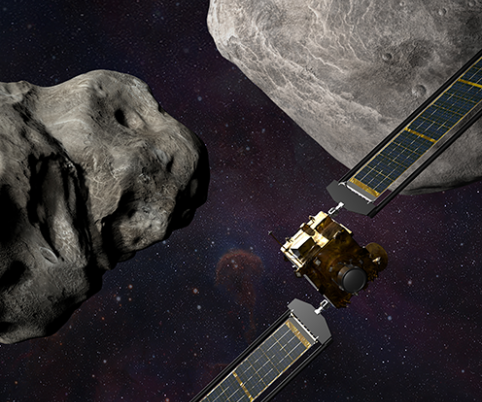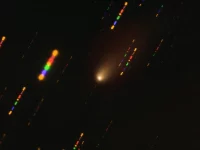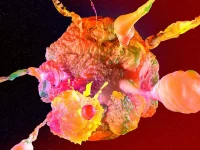Didymos. The Ideal Target for DART’s Mission

DART’s target is the binary asteroid system Didymos, which means « twin » in Greek (and explains the word « double » in the mission’s name). Didymos is the ideal candidate for humankind’s first planetary defense experiment, although it is not on a path to collide with Earth and therefore poses no actual threat to the planet. The system is composed of two asteroids: the larger asteroid Didymos (diameter: 780 meters, 0.48 miles), and the smaller moonlet asteroid, Dimorphos (diameter: 160 meters, 525 feet), which orbits the larger asteroid. Currently, the orbital period of Dimorphos around Didymos is 11 hours and 55 minutes, and the separation between the centers of the two asteroids is 1.18 kilometers (0.73 miles). The DART spacecraft will impact Dimorphos nearly head-on, shortening the time it takes the small asteroid moonlet to orbit Didymos by several minutes.
The Didymos system is an eclipsing binary as viewed from Earth, meaning that Dimorphos passes in front of and behind Didymos as it orbits the larger asteroid as seen from Earth. Consequently, Earth-based telescopes can measure the regular variation in brightness of the combined Didymos system to determine the orbit of Dimorphos. After the impact, this same technique will reveal the change in the orbit of Dimoprhos by comparison to measurements prior to impact. The timing of the DART impact in September 2022 was chosen to be when the distance between Earth and Didymos is minimized, to enable the highest quality telescopic observations. Didymos will still be roughly 11 million kilometers (7 million miles) from Earth at the time of the DART impact, but telescopes across the world will be able to contribute to the global international observing campaign to determine the effect of DART’s impact.
The DART demonstration has been carefully designed. Didymos’s orbit does not intersect Earth’s at any point in current predictions, and the impulse of energy that DART delivers to Dimorphos is low and cannot disrupt the asteroid. The mass of the DART spacecraft at the time of its kinetic impact with Dimorphos is expected to be roughly 570 kilograms (1260 pounds), depending on the amount of fuel used by the spacecraft prior to the kinetic impact event. The mass of Dimorphos has not been directly measured, but using assumptions for the asteroid’s density and size, the mass of Dimorphos is estimated as roughly 5 billion kilograms. Additional detailed information about the Didymos binary asteroid system and DART’s planned kinetic impact geometry can be found in this publication. Furthermore, the change in Dimorphos’s orbit by DART’s kinetic impact is designed to bring its orbit slightly closer to Didymos. The DART mission is a demonstration of a capability to respond to a potential asteroid impact threat, should one ever be discovered.
DART is a spacecraft designed to impact an asteroid as a test of technology. DART’s target asteroid is NOT a threat to Earth. This asteroid system is a perfect testing ground to see if intentionally crashing a spacecraft into an asteroid is an effective way to change its course, should an Earth-threatening asteroid be discovered in the future. While no known asteroid larger than 140 meters in size has a significant chance to hit Earth for the next 100 years, only about 40 percent of those asteroids have been found as of October 2021.










